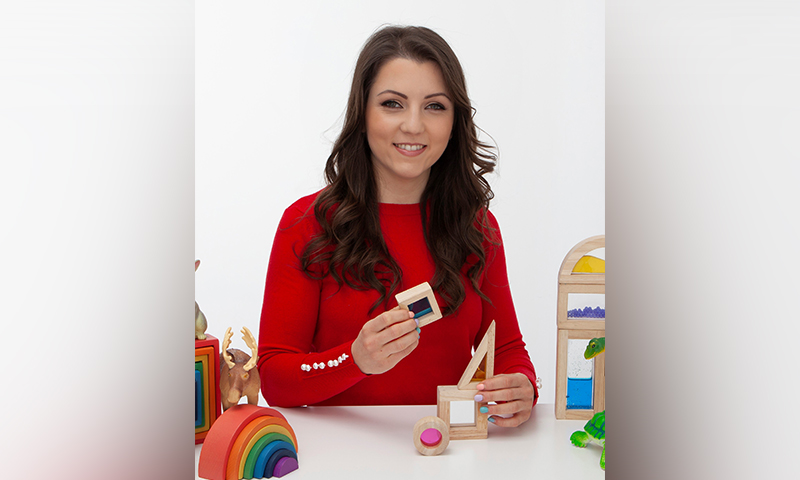Mireia Lopez is qualified as a Primary school teacher with a Masters in Psychology. She is the founder and director of Discovery Playtime and mum to two children who inspired her to start her business. She is passionate about play and child development and promotes the power of play so parents and educators can understand the impact that play has in the development of skills during childhood. To create better generations and more independent and confident adults we need to start by improving the way children play and interact with the world.
Technology is leading the race against the world, and it’s clearly winning. That leaves us with two options: join the race or stay behind. Each option comes with pros and cons, but do we really have a choice? We, adults, have a more developed brain than children (or we should in most cases) and are able to think and decide what is best for us and what we want, and what way we want to do things. Children, on the other hand, rely on us and our decisions, and whatever we do, they will follow.
When we go to a restaurant and quickly hand our phone to our child with cartoons, so they stay quiet, or in a shop, or in the car… is it really their choice? Why do we do it and how does it impact their development? We make decisions based on our experiences, the more experiences we have, the more options we get and the better decisions we can make. Children (because of their young age) don’t have the ability to come up with ideas all the time, and this can result in the common sentence you have heard many times: “I’m bored”.
When a child says “I’m bored” they are actually saying: “I don’t know what to do to stay busy”, “I don’t like being here”, “I can’t focus on this task”. How do we react to this? We panic and feel like we need to entertain our kids 24/7 to avoid boredom. We come up with all sorts of tricks to keep them busy, but our best trick of all: a screen. We hand out devices so easily. We love our kids and certainly want the best for them. That is why we keep them busy and happy with these electronic machines. By handing those screens we stop them from thinking, from coming up with their own
ideas, from talking, from trying to understand what exactly is causing that boredom, from observing the world around them, from being curious, from solving problems… but they are happy… are they?
Do we do this for them, so they don’t feel bored and frustrated, or do we do it for us, so we don’t have to deal with it? Being bored and frustrated is a natural part of their development, they need to go through that feeling in order to learn how to deal with it, and they will have to deal with it sooner or later. Us confronting their boredom is not pleasant, but it must be done if we really want the best for our kids and their development. If they get used to using those devices every time they feel “bored”, they will associate not having the device with being “punished” and this will cause even more frustration and anger.
3 ALTERNATIVES TO SCREEN TIME OUTSIDE THE HOUSE
- Engage in conversations. Encourage them to take part in the conversations when you are out in a restaurant or in the car, play games that don’t require any props: I spy with my little eye something blue; how many R letters can you see on the menu; tell me names of people that start with M, clap your hands every time you see a white car… These conversations with your kids will improve your bond, develop their social skills, expand their vocabulary, help them observe their environment, and give them ideas for the next time they feel bored.
- Bring DIY travel busy bags wherever you go. Use technology as a plan B, or C when you have run out of other ideas, or if it is really taking too long, more than they can REALLY handle! Not all kids enjoy colouring, but there are many different resources out there that can help. Use a zip lock bag for each activity and throw it in the bag when you go out with the kids. You can use a few lego blocks, beads and pipe cleaners for threading, crayons and a notebook, stickers, playdough and small figures… Kids can create their own little adventures anywhere they go. They are using their imagination, creativity and thinking skills instead of switching off their brain while staring at a screen. When you do this, you are investing in their future.
- Storytime using books or simply your imagination. Start sentences with “if I went to a desert island, I would bring…”, or “if I wasn’t scared of anything, I would…” or “if I had a lot of money, I would buy…” or “once upon a time there was a…” or “animals that live in the ocean/jungle/zoo…”. You might have a laugh, but you will also get to know each other better and create little wonderful memories.

The negative effect of technology is not caused by spending too much time glued to the screens, it’s caused by the fact that they are missing out on so much more while they are doing so. Balance is key and we need to be very aware of what children need so we can make an informed decision on when and how they can use their devices. The early years are CRITICAL for the development of a child’s brain. Children practice skills through play and through experiences. By playing, moving, talking, and exploring, they become more creative, confident, and independent. That means that if they are watching screens and not playing, moving, and interacting enough, they are not losing anything but they are also not winning anything. Do you want your child to just make it, or do you want them to thrive? If you chose to thrive, you should keep all kinds of electronic devices ONLY for children from 3 years on and follow some guidance so they can be used in a positive way. Since we can’t avoid the use of technology in our society, we might as well learn how to make the most of it.
HOW CAN WE USE TECHNOLOGY WITH OUR KIDS IN A POSITIVE WAY?
- Watch educational programs like documentaries together, wonder and get curious together, learn about the world and discover things you wouldn’t know otherwise.
- Coding toys can teach children how to anticipate actions, how to be resilient and determined. They can also help them develop thinking skills and a sense of direction. You can find many different coding toys available for children of different ages. These toys can also be combined with other open-ended toys appropriate to their age, like blocks or sensory materials.
- Researching information when children show curiosity is a very powerful learning tool. They will have lots of questions, but we don’t need to have lots of answers! We are here to guide them so they can find their own answers. Learning how to learn is so important and this is a great opportunity to do so.
- Games to support their play experiences (not to replace them). As I mentioned earlier, balance is key. Every person learns in a different way, and it is important that we are aware of our learning style (visual, auditory, hands-on…). Learning using different tools, activities, and systems will make learning activities more inclusive and individual to each child as there will be something suitable for everyone. Same outcome but different process so everyone can connect with the experience.
- Talking to family members or friends is a good way to keep in touch with their loved ones, improve communication skills and develop vocabulary as well as learn the basics on how to make a call, hang up, talk about time spent on a call, decide whom they want to call, talk about that person… Communication is one of the best skills to have and this will definitely help kids develop it through real-life experiences.
In conclusion, children’s brains develop at a fast speed, so we need to take advantage of it and avoid the use of devices that slow it down. We want the best for our kids so providing experiences that promote communication, exploration, movement, interaction, and creativity will be so beneficial for them. There are so many activities that can be done instead of handing out a screen. It might be harder but having kids come with consequences and guiding them to overcome frustration and boredom is one of them. It is a long-term investment that will pay off when you see your child become a creative, confident, and independent adult who trusts you as their role model.




